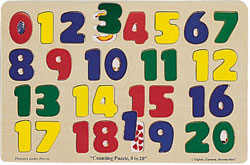
Every month the Census Bureau and HUD release stats on new residential one family home sales. This month the abstract from the release was as follows:
_Sales of new one-family houses in April 2006 were at a seasonally adjusted annual rate of 1,198,000, according to estimates released jointly today by the U.S. Census Bureau and the Department of Housing and Urban Development. This is 4.9 percent (±11.5%)* above the revised March rate of 1,142,000, but is 5.7 percent (±9.8%)* below the revised April 2005 estimate of 1,270,000. The median sales price of new houses sold in April 2006 was $238,500; the average sales price was $298,300. The seasonally adjusted estimate of new houses for sale at the end of April was 565,000. This represents a supply of 5.8 months at the current sales rate._
[Download the full release [pdf]](http://www.census.gov/const/newressales.pdf). [Listen to Professor Robert Shiller discuss the current real estate market. [see audio section – Bloomberg]](http://quote.bloomberg.com/apps/news?pid=10000006&sid=a8mBDqr0MV9Q&refer=home)Economists were projecting a 6% decline from March to April [but the final stats showed a 4.9% increase [Bloomberg]](http://quote.bloomberg.com/apps/news?pid=10000006&sid=a8mBDqr0MV9Q&refer=home), sending bond yields up today over inflation concerns.
But here’s why these stats from Census are essentially meaningless. Apparently I am not alone on this.
* The historical data is constantly revised (significantly) – Amazingly, the prior [5 months of data was just revised [BW]](http://www.businessweek.com/the_thread/hotproperty/archives/2006/05/less_to_sales_r.html?campaign_id=rss_blog_hotproperty) and while the number of homes available grew 27% over the prior year and prices were up 1%.
* The margin of error is greater than the stat – According to the press release, the 4.9% increase [is actually somewhere between 16.4% above to 6.6% [Lanser OCR]](http://blogs.ocregister.com/lansner/archives/2006/05/new_home_sales_up_down_whateve.html) below the revised March rate of 1,142,000, but is somewhere between 15.5% below to 4.1% above the revised April 2005 estimate of 1,270,000.
* It doesn’t consider the breakdown of investor units – _[How many of the new home sales [TMR]](http://21stcmb.typepad.com/the_mortgage_reports/2006/05/new_homes_sales.html) are classified as second homes or investment properties? A deeper look into the numbers reveals that the South and West regions represented 960,000, or 80.1%, of the new homes on which paper was written. These regions host more than a few retirees, snowbirds, and also harbor plenty of vacation spots. If the sales figures represent second homes and investments to the home buyers in those regions, then we can infer that there are still plenty of speculators in the market._
* Its a small data set and it doesn’t apply to local markets – The number of transactions is about one-seventh that of existing home sales. Since these are national stats, they are not appropriate to rely on for local market analysis.
One Comment
Comments are closed.


Also, if new home starts and inventory are increasing, while forecasts are projecting less housing units to be sold, isn’t that a bad thing?